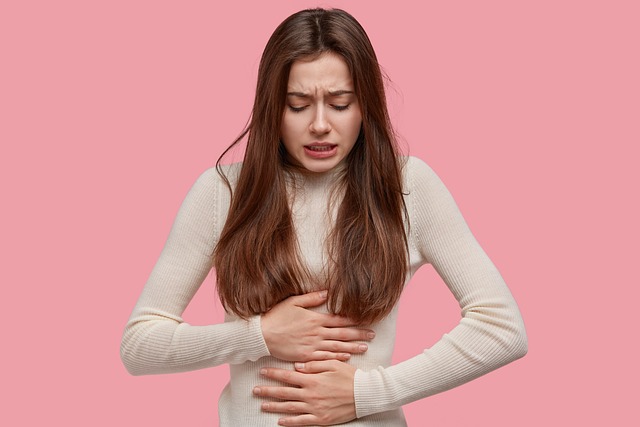What is Endometriosis?
Endometriosis is a chronic, progressive disorder in which the tissue that normally lines the uterus (the endometrium) grows outside of the uterus. Endometriosis most commonly involves the ovaries, fallopian tubes and the tissue lining the pelvis. However, in rare cases it may also occur in other parts of the body, such as the lungs, brain or skin.
Endometriosis is often characterized by pelvic pain and cramping, which can vary from mild to severe. The pain is typically worse during menstruation and may improve after menopause. Other symptoms may include fatigue, gastrointestinal problems and infertility.
Although there is no cure for endometriosis, there are treatments available that can help relieve symptoms and improve quality of life. These include medication, surgery and lifestyle changes.
Symptoms of Endometriosis
Endometriosis is a condition in which the tissue that lines the inside of your uterus (the endometrium) starts growing outside of your uterus. Endometriosis most commonly involves your ovaries, fallopian tubes and the tissue lining your pelvis.
Endometriosis can cause pain — sometimes severe — especially during your period. You may also have pain during sex, when you urinate or have a bowel movement. Some women with endometriosis also have fatigue, digestive problems such as constipation or diarrhea, bloating or nausea, and heavy bleeding.
If you have any of these symptoms, talk to your doctor. He or she can do a pelvic exam and order tests to check for endometriosis. There is no cure for endometriosis, but there are treatments that can help relieve your symptoms and improve your quality of life.
Causes of Endometriosis
There are many possible causes of endometriosis, but the exact cause is unknown. It is thought to be due to a combination of genetic and environmental factors.
Endometriosis may be caused by:
• Retrograde menstruation. This is when menstrual blood containing endometrial cells flows back through the Fallopian tubes and into the pelvic cavity instead of out of the body. These endometrial cells implant themselves on the ovaries, Fallopian tubes, and other tissues in the pelvic area.
• A defect in the immune system. This may allow endometrial cells to grow outside the uterus.
• Hormonal changes. Endometriosis is more common in women who have higher levels of certain hormones, such as estrogen. Estrogen can promote the growth of endometrial tissue.
• Genetic factors. Endometriosis seems to run in families, so there may be a genetic predisposition for the condition.
Diagnosing and Treating Endometriosis
Endometriosis is a condition in which the endometrium, the tissue that lines the uterus, grows outside of the uterus. Endometriosis most commonly affects the ovaries, fallopian tubes, and the tissue lining the pelvis. However, in rare cases, endometriosis has been found in other parts of the body, such as the brain, lungs, and skin.
Endometriosis is often a painful condition. The pain is caused by the tissue growing outside of the uterus and attaching itself to organs or tissues in the pelvis. This can cause inflammation and scarring. The pain is typically worse during menstruation, as the tissue bleeds. Many women with endometriosis also experience pain during sex, urination, and bowel movements.
There is no cure for endometriosis, but there are treatments available to help ease the pain and other symptoms associated with the condition. Treatment options include medication, surgery, and lifestyle changes.
If you think you may have endometriosis, it’s important to see your doctor so they can make a diagnosis. Your doctor will likely ask about your medical history and symptoms and perform a physical exam. They may also order tests like an ultrasound or MRI to get a better look at your pelvic area. Once your doctor has made a diagnosis of endometriosis, they’ll work with you to develop a treatment plan that’s best for you.
Coping Strategies for Endometriosis
Endometriosis is a chronic and often painful condition that affects women of childbearing age. It occurs when the tissue that lines the inside of the uterus (the endometrium) grows outside of the uterus. Endometriosis can cause pelvic pain, menstrual cramps, pain during intercourse, and infertility.
There is no cure for endometriosis, but there are treatments that can help relieve symptoms and improve fertility. If you are living with endometriosis, it is important to find coping strategies that work for you. Here are some coping strategies that may help:
-Talk to your doctor about your symptoms and treatment options. This can help you feel more in control of your condition.
-Join a support group or online community. This can provide emotional support and practical advice from others who are dealing with endometriosis.
-Exercise regularly. Exercise can help reduce pain and improve your overall sense of well-being.
-Eat a healthy diet. Eating a healthy diet can help reduce inflammation and ease symptoms of endometriosis.
-Try stress-relieving techniques such as yoga, meditation, or deep breathing exercises. Reducing stress can help ease symptoms of endometriosis.
How to Support Someone Living with Endometriosis
There is no one-size-fits-all answer to this question, as the best way to support someone living with endometriosis will vary depending on the individual and their specific needs. However, there are some general things you can do to help:
- Educate yourself about endometriosis. This will help you better understand what your friend or loved one is going through, and what they may need from you in terms of support.
- Be a good listener. Endometriosis can be a very isolating condition, so simply being there to listen and offer support can make a big difference.
- Offer practical assistance. This could involve helping with household tasks or childcare if your friend or loved one is struggling to cope.
- Help them access information and resources. There is a lot of useful information available about endometriosis, so assisting your friend or loved one in finding this information can be very helpful.
- Respect their decisions. Endometriosis is a very personal condition, and each person will have their own preferences for how they want to manage it. Respecting these decisions is an important part of supporting someone with endometriosis
Alternatives to Medication for Endometriosis
There are many alternatives to medication for endometriosis. One is acupuncture. Acupuncture has been shown to be effective in the treatment of pain associated with endometriosis. Another is massage therapy. Massage therapy can help to relieve pain and improve circulation. Additionally, there are many herbs that can be used to treat endometriosis. Herbs such as ginger, turmeric, and licorice root have all been shown to be effective in the treatment of endometriosis.
Conclusion
Endometriosis is a condition that affects millions of women worldwide, but it doesn’t have to be the norm. With an understanding of the signs and symptoms, you can take steps to get diagnosed and start your journey towards a life free of endometriosis-related pain. Talk to your doctor about any concerns you might have and don’t hesitate to ask questions or seek second opinions if needed. The key is not to let endometriosis stop you from living life on your own terms – with proper diagnosis, treatment, and lifestyle changes, you can live happily while managing this condition.








